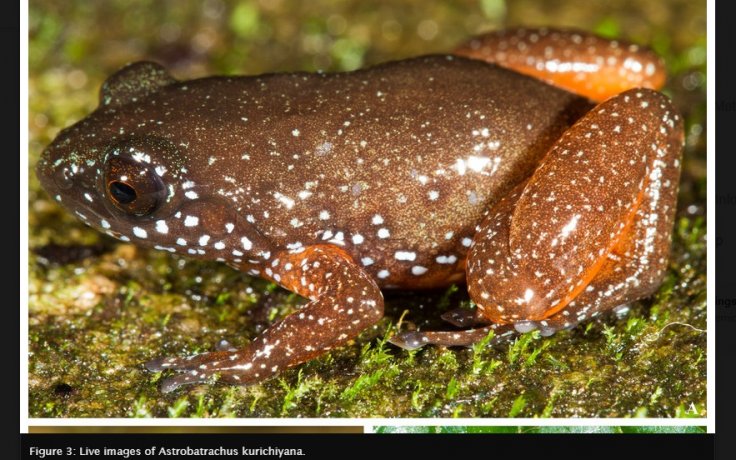
Indian scientists have discovered a new species of frog that is starry dwarf in appearance representing an entirely new genus and species and potentially even a new family, while surveying frogs and reptiles at a height of 1,300 meters in India's Western Ghats.
The tiny new frog species was found in tropical forests has been one of a kind for millions of years, said Palaniswamy Vijayakumar who was among the first to spot the new species one night in 2010. It was discovered at a high-elevation massif in the Wayanad Plateau of the southern Western Ghats in Kerala.
The frog, which looked like any other frog, did not stand out as a different species, initially with its brown back, orange belly and starlike spots, which acted as camouflage against the dark hues and water droplets on the forest floor. It measured just 2 to 2.9 centimeters long that it "can sit on your thumb," said Vijayakumar, a biogeographer at George Washington University in Washington, D.C.
Named generally as the starry dwarf frog, the frog didn't qualify as new species discovered on the trip but the DNA analysis, anatomy and geographic distribution later stunned the team that they had hit upon a new species altogether. Phylogenetic analysis revealed that the lineage belongs to Natatanura and clusters with Nyctibatrachidae, a family endemic to the Western Ghats/ Sri Lanka biodiversity hotspot. The frog was the sole known species of a lineage dating back 57 million to 76 million years ago, when the Indian subcontinent was breaking away from Madagaskar and merging with Asia.

"I had no clue I was holding onto a 50-million-year-old lineage," said Vijayakumar Palaniswamy. The researchers are working to confirm through genetic analysis and anatomical comparisons to decide whether it belongs to a differently new species. "It's a unique, old lineage without any close relatives" said Vijayakumar.
The team named it scientifically as Astrobatrachus kurichiyana — with a genus name that includes "astro" for the frog's bluish-white starlike dots, and species name refers to local Kurichiyan people who live in Kerala where the frog was found.
The report was published in PeerJ.









